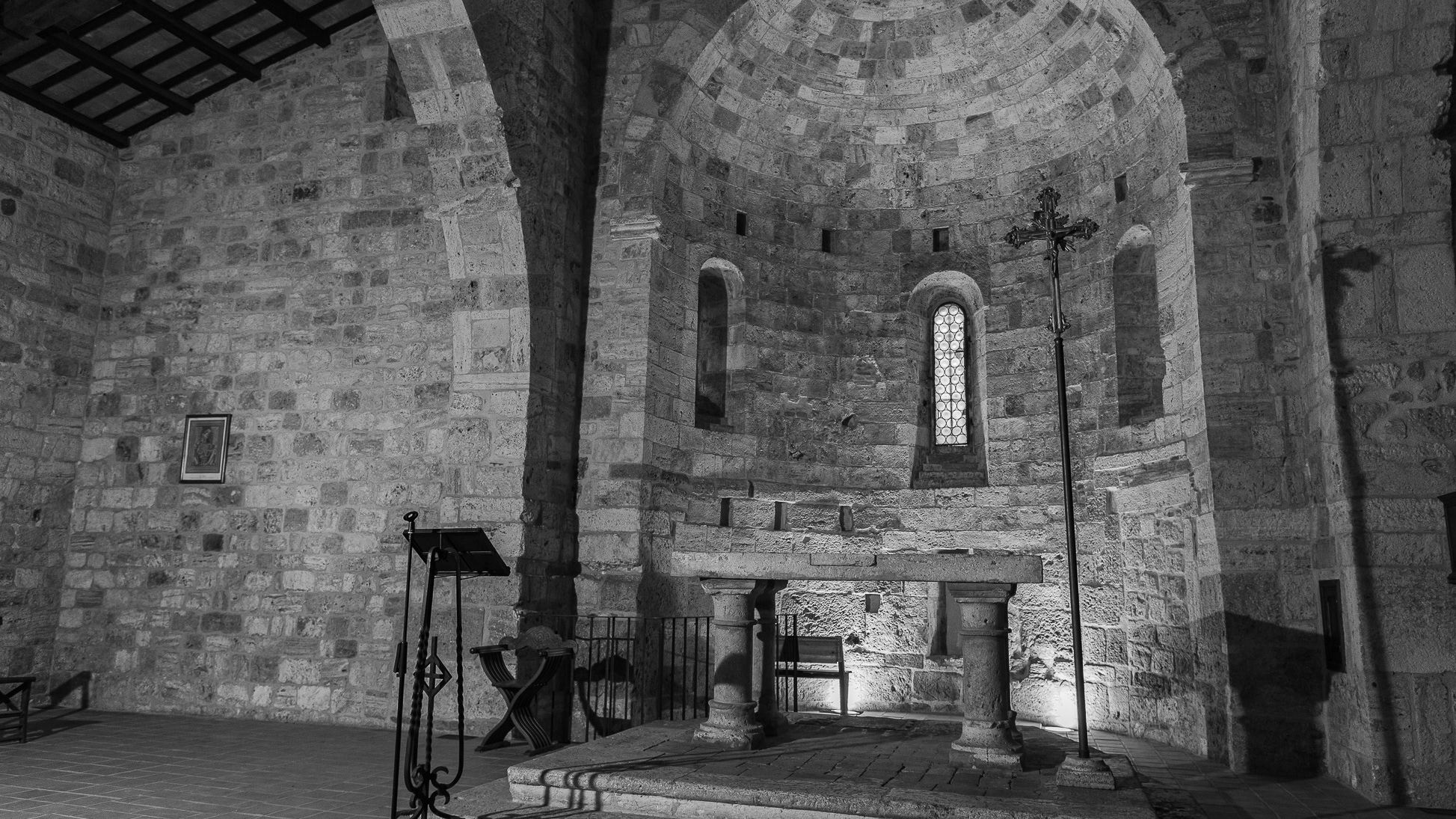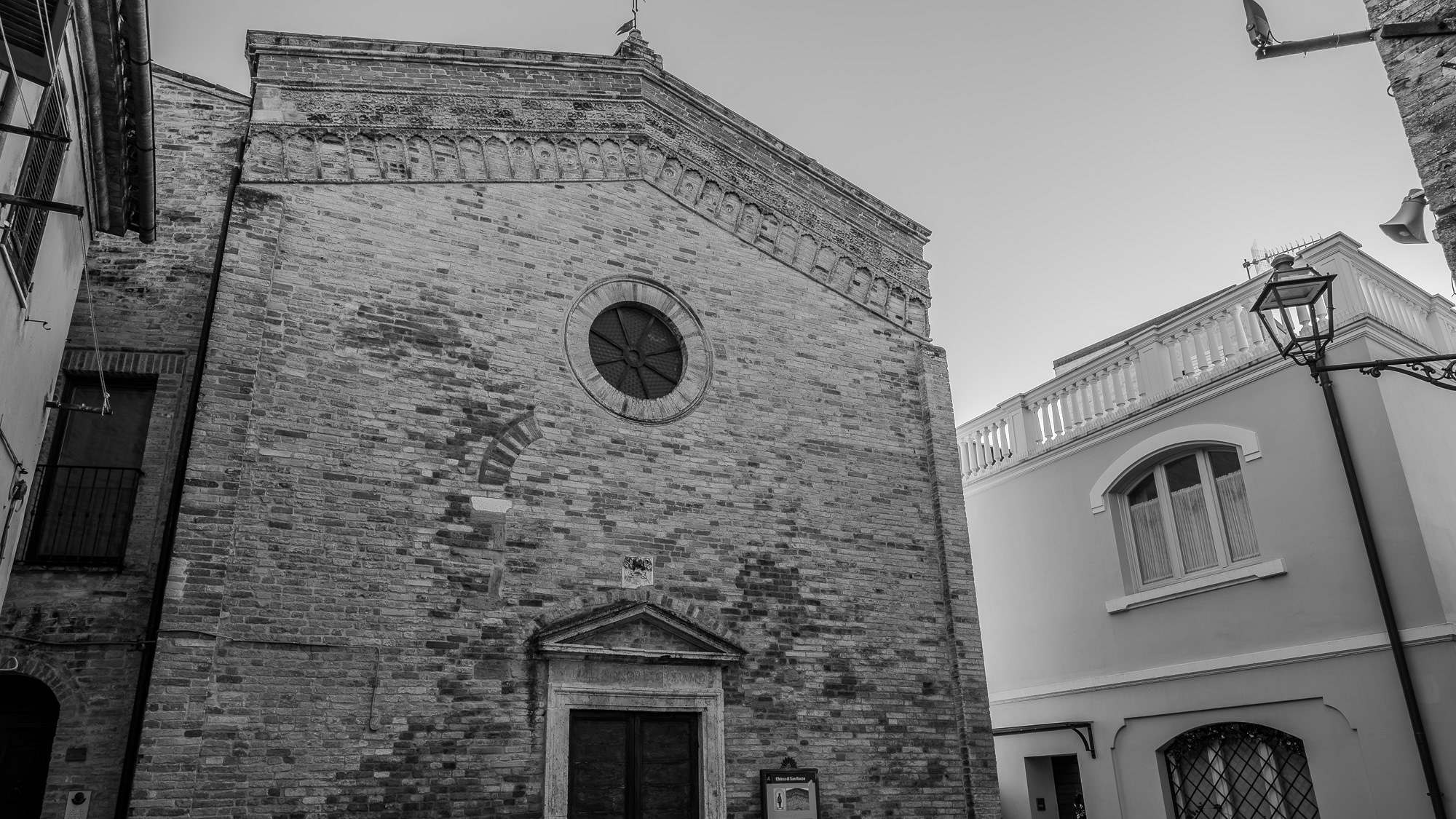Marche. Wonderful view of the Marche hills
2022
The Marche, a region of eastern Italy, rises between the Apennine mountains and the Adriatic Sea.
You may also like
2025
Landscape of the Marche hills. View from Montedinove
2025
Marche, spectacular view and sunset
2022
Ripatransone, Ascoli Piceno. The Church of S. Rocco
The Church of S. Rocco was built in the first half of the 16th century, with a sandstone portal by M. Giacomo da Varese. Inside, the wooden statue of St. Rocco, by the Ripano sculptor Don Francesco Evangelisti (18th century), and the altar statue of the Sacred Heart of Jesus (around 1875), by Giorgio Paci from Ascoli.
2022
Castel Trosino, Ascoli Piceno. Glimpses
Castel Trosino is a small village of medieval origins which embodies an important series of historical, architectural, cultural and environmental "values". Castel Trosino has always been located in an important area that leads from the Apennine passes to the Adriatic Sea. It is in fact widespread opinion that the original Salaria consular road passed on this route, we do not know if this corresponds to the truth, but it is certain that through this important village there was a route that connected with the southern area of Umbria, a director widely used in Roman and early medieval times. The small village is located on a travertine rock (the main material of the area) as a cliff over the Castellano valley. The small village of the castle itself is organized around a central street that penetrates inside to the main square in front of the church dedicated today to San Lorenzo Martire.

2022
Offida, Ascoli Piceno. The church of the Addolorata
The church of the Addolorata was built in the century XV. The façade is characterized by a portico above which, leaning against the wall, there are two elegant sixteenth-century stone windows. Inside the church there is the "Bara" (as the chariot with canopy where the statue of the Dead Christ is placed) is commonly called, which is triumphantly carried in procession on the evening of Good Friday.

2023
Ascoli Piceno. The Church of San Francesco
The church of San Francesco in Ascoli Piceno is considered one of the best Italian works of Franciscan architecture, as well as the most representative Franciscan religious building in the Marche region.

2023
Ascoli Piceno, Marche. The Cathedral of San Emidio
The city's cathedral, dedicated to the patron saint, stands on the site of a Roman public building, perhaps the Basilica del Foro, and is the result of multiple construction events that substantially range from the 11th to the 16th century. The main facade created by Cola dell'Amatrice opens onto Piazza Arringo, while the two side facades date back to the end of the 15th century. The interior, with three naves divided by polygonal pillars, from the end of the fifteenth century, houses, among the various works, in the central apse a late Gothic wooden choir from the first half of the fifteenth century, a wooden pulpit from around 1660; in the Chapel of the Sacrament the Polyptych of Sant'Emidio by Carlo Crivelli, the imposing decorative cycle by Cesare Mariani, and the crypt of Sant'Emidio, built in the mid-11th century which houses, in a 4th century sarcophagus, the relics of the patron saint of the city.

2023
Ascoli Piceno. The Church of S.S. Vincenzo e Anastasio
The Church of Santi Vincenzo e Anastasio is a Catholic place of worship in the city of Ascoli Piceno. Its main façade overlooks one side of Piazza Ventidio Basso.
2022
Ascoli Piceno. The church of S. Tommaso Apostolo
The church of S. Tommaso Apostolo, built in Romanesque style, stands on the side of the homonymous square which houses the remains of the Roman amphitheater of Ascoli Piceno, reinterred in 1974.

2024
Acquaviva Picena. Church of San Rocco
Church of San Rocco (13th century), Romanesque. It is the oldest church in Acquaviva and today the interior appears nineteenth-century.
